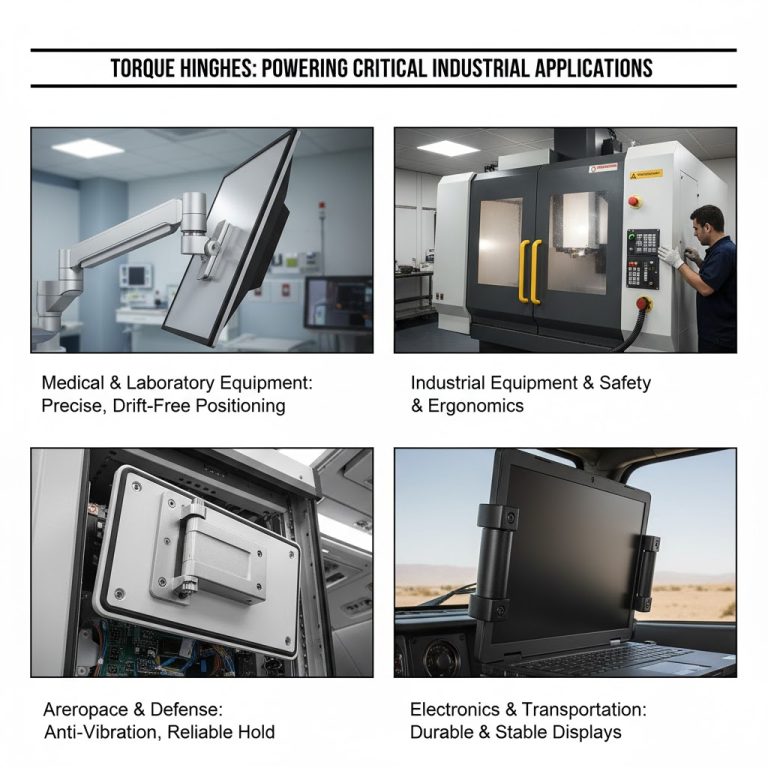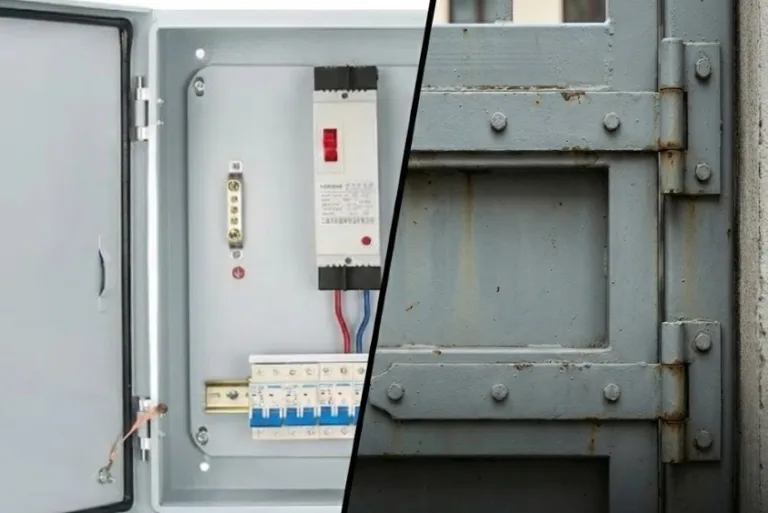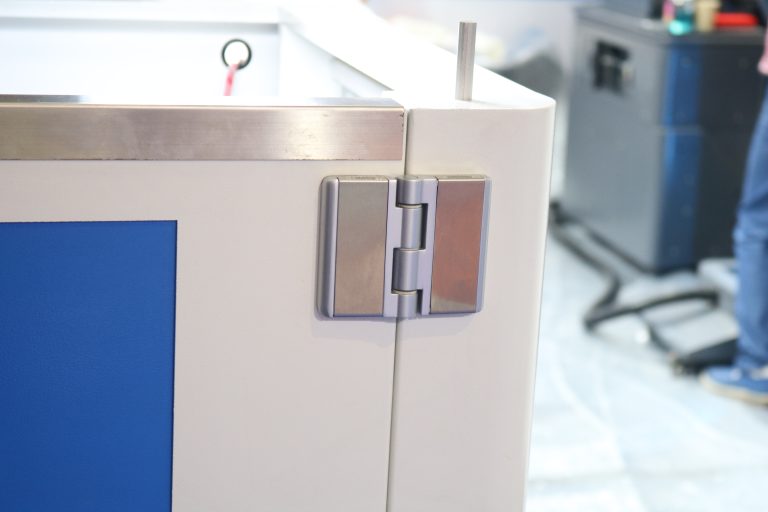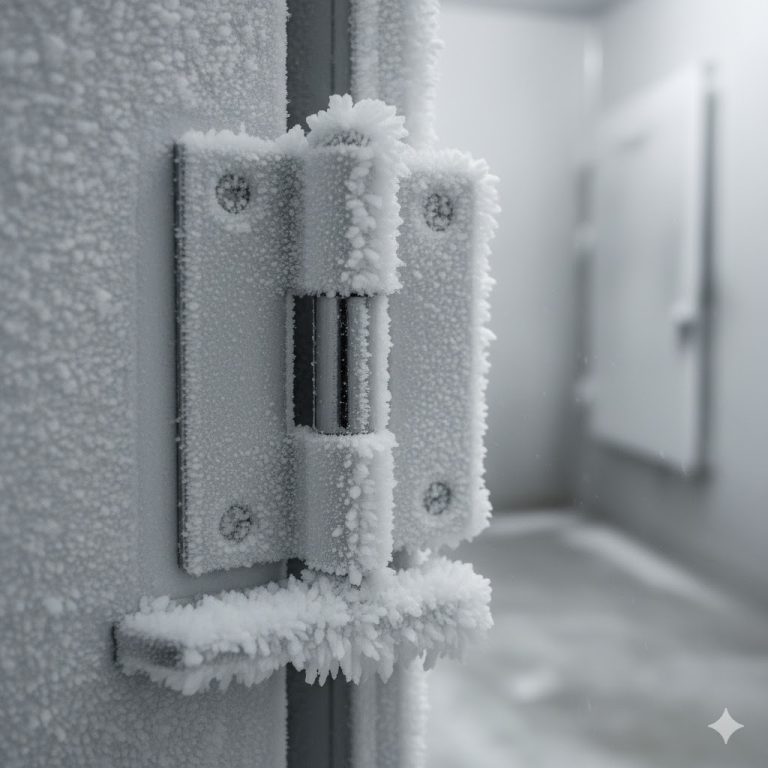HTAN is one of the leading manufacturers of industrial hinges, handles and latches in China.
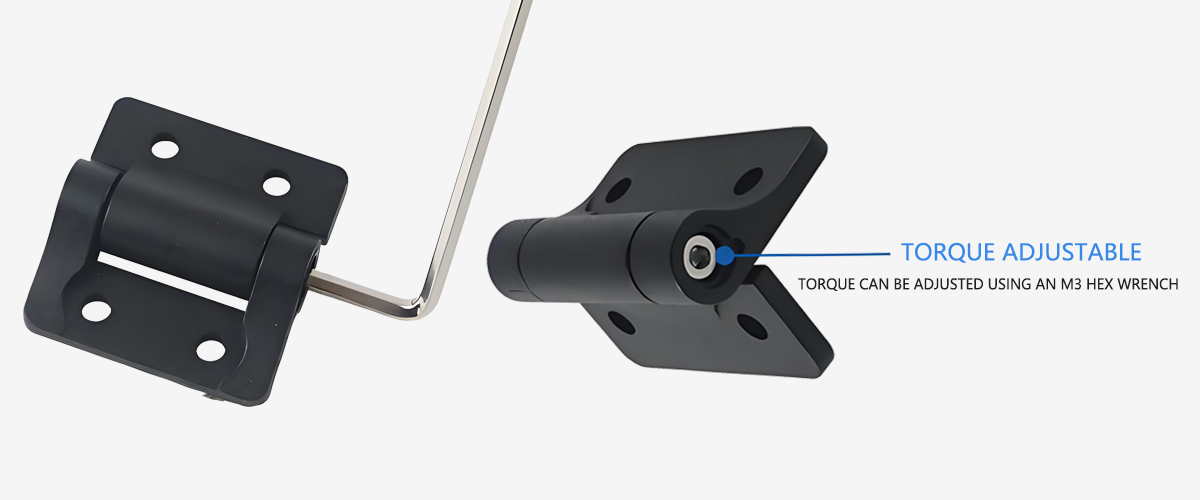
Adjustable Torque Hinges are important in new product design. They help make things safer, work better, and be more flexible. These hinges control how things move in many uses. People use them in big machines and in small electronics. In 2024, the market for these hinges was $450 million. Consumer electronics made up over 35% of the market.
| Segment | Market Share (%) |
|---|---|
| Consumer Electronics | >35 |
| Automotive | ~25 |
| Aerospace & Defense | 15 |
| Medical Devices | 13 |
| Industrial Equipment | 12 |
Picking the right hinge is important. For example, a hinge with a 1.0 N·m torque rating is good for a cabinet door. This makes sure the door moves smoothly and safely. It also stops the door from moving when you do not want it to.
Key Takeaways
- Adjustable torque hinges help you control how hard it is to move doors or panels. This makes products safer and easier to use.
- These hinges can hold doors and lids at any angle. You do not need extra parts. This makes things safer and more convenient in many places.
- They help workers open heavy panels with less effort. They also keep equipment steady in factories, hospitals, and homes.
- You must pick the right hinge for the door’s weight, size, and use. Good installation and regular care help hinges work well.
- Using adjustable torque hinges can make products last longer. They can work better and give users a smoother, safer experience.
Adjustable Torque Hinges Overview
Key Features
Adjustable Torque Hinges have many helpful features. They let people control how hard it is to open or close things. This helps match the hinge to different weights and what people want. Many businesses use these hinges, like in medical tools, machines, cars, and food factories.
- People can change the friction for different doors and needs.
- Doors or panels can stop at any angle without extra parts.
- Designs look neat because no extra lid supports are needed.
- Hinges stop things from moving when they should not.
- European hinges, including adjustable torque types, work with many door types and sizes.
- They help make things safer, easier to use, and more flexible in places like factory cabinets and machine doors.
│Studies show these hinges help make factories, warehouses, and kitchens safer and more efficient. They also help products last longer and work better.
How They Work
Adjustable Torque Hinges have a special part inside. This part makes friction when you move a door or panel. You can turn a screw or knob to change the friction. More friction makes the door move slower or stay still. Less friction lets the door move more easily.
Some products use these hinges for swivel and tilt in two ways. For example, a monitor can stay at any angle without falling. This helps people put screens or panels where they want. Adjustable Torque Hinges do not need extra parts to hold things open, so designs are simpler and safer.
Industrial Applications
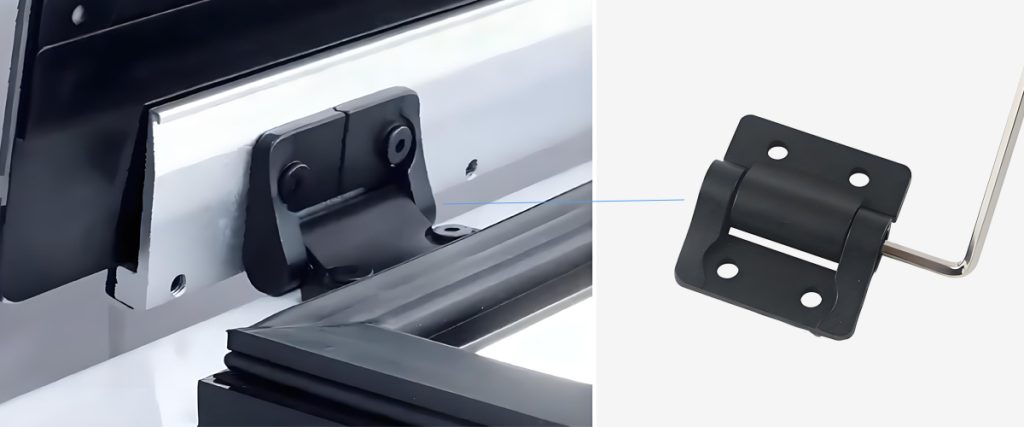
Machinery and Equipment
Factories have many heavy doors and covers. Adjustable torque hinges help workers move these parts safely. A generator cover can weigh over 60 pounds. With the right hinge, a worker only needs 3 pounds of force to lift it. This makes daily jobs easier and safer.
- These hinges make it easier to open heavy panels.
- They keep doors and lids in place at any angle.
- The hinges last for thousands of uses without much care.
- Factories save money because they do not need extra parts.
- Workers get less tired and can work faster with these hinges.
- Designers can set the hinge for each door’s weight.
Torque hinges help control how lids and covers move. They hold these parts at the right angle without extra locks. This stops sudden moves and keeps workers safe. The hinges also make movement smooth and last a long time, even in tough places.
Access Panels and Covers
Access panels protect important machine parts. Adjustable torque hinges let these panels open and close smoothly. This helps stop accidents and damage.
Bonnets and hatch covers use strong torque hinges. These hinges give the right resistance, so panels stay open or closed. Workers can adjust the hinge for each panel’s weight. This makes opening and closing safe and easy every time.
Switch cabinets also use these hinges. The panels stay open, so workers can use both hands. The hinges help keep the workspace safe and neat.
Medical and Electronic Devices
Hospitals need equipment that is easy and safe to use. Adjustable torque hinges help staff move screens and trays with one hand. The hinges hold things in place, so they do not fall.
- Medical screens stay where users put them, with no extra locks.
- The hinges make it easier for everyone to use the equipment.
- They last a long time and do not need oil.
- Some hinges have a breakaway feature for safety.
- The hinges resist strong cleaners used in hospitals.
- Built-in wire management keeps cables safe.
These features make devices safer and more comfortable. The hinges help people use good posture and lower injury risk. They also help keep equipment clean and working well in busy places.
Consumer Applications
Electronics and Displays
People use electronics every day at home and school. Devices like laptops and tablets have screens that move. Adjustable Torque Hinges help these screens stay where you put them. A student can open a laptop and set the screen just right. The screen will not fall or move by itself.
Monitors at work and home use these hinges, too. Workers can tilt or turn their screens for comfort. This helps stop neck and eye pain. Some lamps use these hinges as well. You can point a lamp at your book or desk. The lamp will stay in place.
│Tip: Adjustable hinges help everyone find the best angle. This makes it easier to work and study.
Furniture and Cabinets
Furniture makers use special hinges for cabinets and doors. Shop cabinets and kitchen cupboards often need doors to stay open. Adjustable Torque Hinges let doors stop at any angle. A cook can open a cabinet and grab a pot with both hands.
Store and office doors use these hinges, too. The doors open smoothly and stay open when needed. This helps people carry things or push carts without doors closing fast.
Here is a table showing common furniture uses:
| Product Type | Benefit of Adjustable Torque Hinges |
|---|---|
| Kitchen Cabinets | Doors stay open for easy access |
| Shop Cabinets | Safe and smooth opening |
| Display Cases | Panels hold position for viewing |
| Commercial Doors | Stay open for easy movement |
Everyday Devices
Many things we use every day have these special hinges. Trash bins, toolboxes, and some toys have lids that stay open. This makes them safer and easier to use. For example, a trash bin with an adjustable hinge will not slam shut. This helps stop injuries.
Some bathroom mirrors and medicine cabinets use these hinges, too. The mirror can tilt and hold its spot. People can move it for the best view.
- Lids and covers stay open without extra parts.
- Products last longer because the hinges stop wear.
- People find these things easier and safer to use.
Adjustable Torque Hinges give designers more options. They help make products that work better for everyone.
Types and Selection
Hinge Types
Many products use different types of torque hinges. Each type works best for certain jobs. Here are some common types:
- Friction torque hinges use special friction parts inside. These parts let doors or panels stay in place at any angle. People often use them in laptops, monitors, and medical devices.
- Hollow shaft hinges have a space inside the hinge. Wires or cables can pass through this space. This design helps in electronics and equipment where cables need protection.
- Spring-loaded torque hinges use a spring to help move or hold a door. These work well for lids that need to close by themselves.
- Detent hinges have set points where the hinge stops. These points help panels stay at certain angles.
Each hinge type has a special design. The right choice depends on what the product needs to do.
Choosing the Right Hinge
Selecting the best hinge means looking at several factors. The weight and size of the door or panel matter most. Heavier doors need stronger hinges. The material of the hinge, like stainless steel, affects how much weight it can hold and how long it lasts.
│Tip: Always check the load-bearing capacity and test data before choosing a hinge.
- Hinge design, such as the number of knuckles and shape, changes how weight spreads across the hinge.
- Testing data shows how much weight a hinge can hold before bending or breaking.
- Proper installation, with the right screws and alignment, helps the hinge reach its full strength.
- Door weight, width, and hinge spacing all change the stress on each hinge. Wider or heavier doors need more hinges or stronger ones.
- Load capacity tables from certified tests help match the right hinge to the door size and weight.
Engineers use formulas to find out how much torque a door creates. They compare this number to the hinge’s maximum torque. The hinge must handle the door’s torque with a safety margin. Testing proves that the hinge can meet these needs. This process keeps doors safe and easy to use.
Installation and Care
Installation Tips
Proper installation helps hinges work well and last longer. Installers should start by checking the weight and size of the door or panel. This step helps them pick the right hinge strength. Manuals suggest using the formula:
Torque (T) = Distance from hinge center to panel center (L) × Mass of panel (m) × 9.8
This formula helps find the needed torque for safe use.
Installers often use a hex key to adjust the hinge. Most hinges have a single screw for this purpose. This makes it easy to fine-tune resistance. Choosing the right mounting style matters, too. Through-hole and surface-mount options fit different needs. Stainless steel works best for wet or outdoor places. Aluminum is good for lightweight jobs. Titanium fits high-strength needs.
│Tip: Always align the hinge carefully and use the correct screws. This prevents binding and keeps movement smooth.
Adjustment and Maintenance
Regular care keeps hinges working well. Installers should check for dirt or damage during routine inspections. Cleaning the hinge with a soft cloth removes dust and debris. Some hinges need a small amount of lubricant to stay smooth.
If a door feels too loose or too tight, adjust the torque screw with a hex key. Manuals recommend checking the hinge’s resistance after each adjustment. If the hinge makes noise or feels stuck, check for misalignment or worn parts. Replace damaged hinges right away.
- Inspect hinges every few months.
- Clean and lubricate as needed.
- Adjust torque if movement changes.
- Fix or replace any broken parts.
These steps help products last longer and stay safe for users.
Adjustable torque hinges make products work better in lots of ways. They keep lids and panels in place at any angle. This helps keep people safe and stops things from moving suddenly. Many businesses use these hinges because they make designs simple. They also help products last longer and work well.
| Benefit | Explanation |
|---|---|
| Safety | Keeps panels in place and lowers injury risk |
| Efficiency | No extra parts needed, so it saves time |
| Usability | Makes it easy to move and adjust things |
Picking the right hinge can help make your project better.
FAQ
What is an adjustable torque hinge?
An adjustable torque hinge lets you pick how hard it is to move a door or panel. This hinge holds things in place at any angle you want. Many products use these hinges to make things safer and easier to use.
Where do people use adjustable torque hinges most often?
People use these hinges in laptops, medical tools, cabinets, and big machines. Designers pick them for things that need smooth movement or panels that stay open without extra help.
How do you adjust the torque on these hinges?
Most adjustable torque hinges have a screw or knob you can turn. Turning it changes how much friction is inside the hinge. You can make the hinge tighter or looser to fit the door or panel’s weight.
Do adjustable torque hinges need special care?
You should clean these hinges and check for damage often. Some types need a little oil to work well. Look at the hinge every few months and change the torque if it feels different.
Can adjustable torque hinges improve safety?
Yes. These hinges stop doors and panels from slamming shut. They help stop injuries and keep things steady. Many workplaces use them to make jobs safer for everyone.



